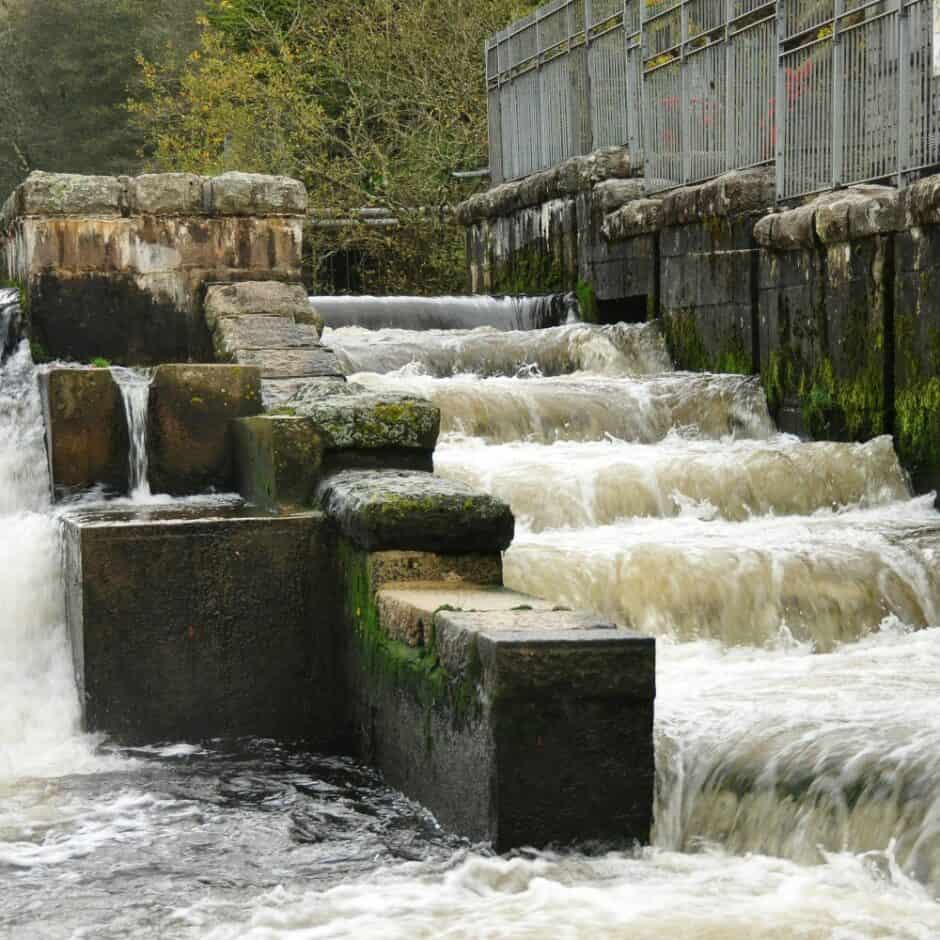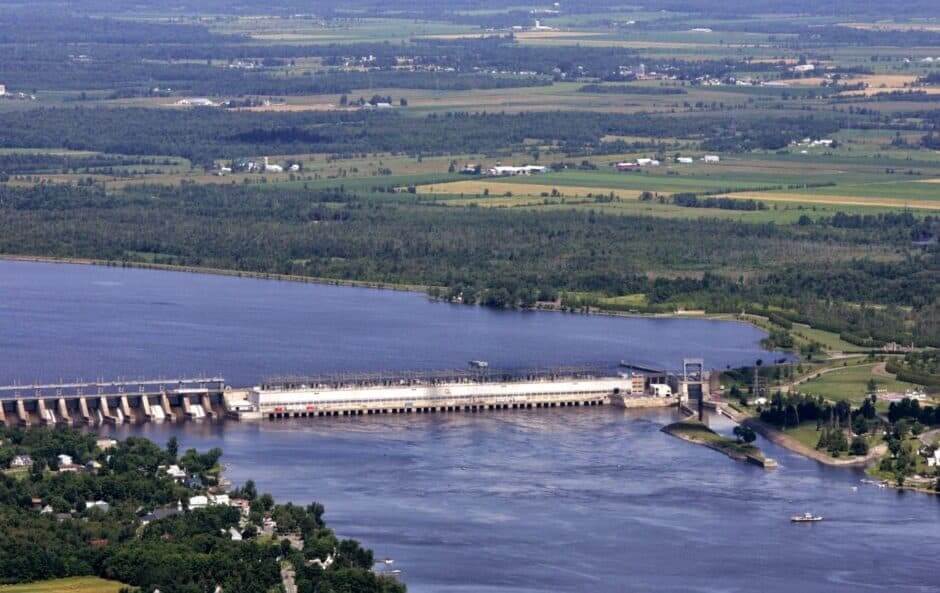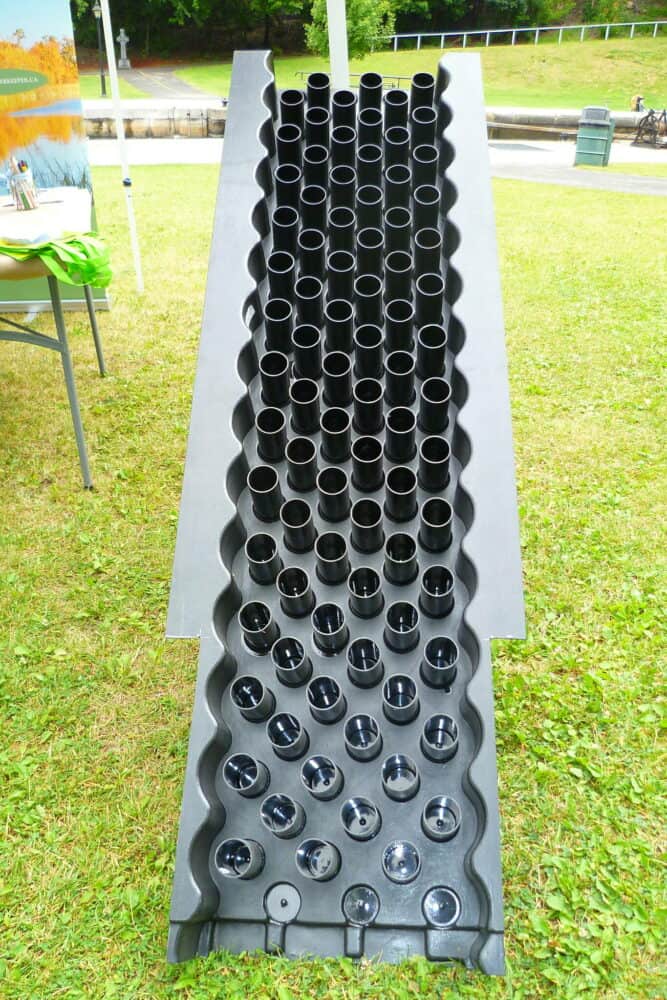Posted: February 12, 2021
A ladder at Carillon could help save the American eel

Constructing an eel ladder on the Carillon dam could provide our endangered and fragmented American eel population with the fighting chance it deserves.
The Ottawa River watershed plays host to 50 major dams and hydroelectric generating stations. Most of these, such as the Carillon dam, present an insurmountable obstacle to American eels making their way to and from the Atlantic Ocean. Why? Because despite there being scientific evidence on the positive effects of fish passages for migratory species, very few that are suitable for the endangered American eel have been implemented in our dams.
What is fish passage and why is it necessary?
Dams in the Ottawa River have played a significant role in our communities’ lives for several years, partly as generating stations that supply us with power. Nonetheless, this benefit comes with a tradeoff: hindering or completely preventing travel for migratory fish.
For that reason, fish passages exist. These structures facilitate or enable migration for numerous species that have to circumnavigate barriers—such as dams—in our watershed. Multiple types of fish passages exist, and not all serve the same purpose. For instance, there are denils, steeppasses, pool-and-weirs, and many more. While one might be excellent for allowing one species to return to or leave its breeding grounds, it might be ineffective for another.
Examples of fish passage:

Image: Bonneville Power


Image: Nilfanion
Whether it is Sockeye, Coho and Chinook Salmon in the Stamp River on Vancouver Island or American Shad in the Rivière des Prairies on the doorstep of our watershed in Montréal, there are various successful cases in which fish passages have improved the ability for fish to reach their desired habitat worldwide.
Yet, perhaps the case of North Carolina’s Roanoke River is the most applicable to our own. Here, young eels had been unable to reach their habitat upstream since 1955, when the Roanoke Rapids Dam was built.
However, in 2010, two eel ladders were installed. Since then, after having been prevented from reaching their historic territory for more than 50 years, over 2 million eels have been able to complete their migration!
Cases like the Roanoke’s, where an endangered population was able to overcome hindrances to its migration thanks to simple technological innovation, make us hopeful for the future of our own American eels that desperately need our help now more than ever.
What is the state of passage for American eels in the Ottawa River watershed?
For American eels to safely migrate between the Atlantic Ocean and our watershed, they must successfully navigate their way through an obstacle course of several dams on the Ottawa River, the main threats to their survival. In fact, since the construction of the Carillon dam in the 1960s, the eel population in our watershed has collapsed dramatically, by as much as 99%.
Their journey would be much easier if sufficient and adequate eel passage infrastructure existed. Even so, only a minority of our dams do have eel ladders, such as the Chaudière Falls Powerhouse. The fact remains that the American eel’s first, largest, and most challenging roadblock to enter the Ottawa from the Saint Lawrence, the Carillon dam, does not.

Carillon Dam, photo from Aerialphotographs.ca
As you might know from reading our previous FAQs on the Carillon Dam and the American eel, the lack of eel passage results in a population that faces significant challenges when attempting to enter the Ottawa river. When migrating upstream, juveniles that attempt to reach the Ottawa River cannot access their prime habitat, no thanks to an impassable barrier devoid of an eel ladder.
That’s why now as Hydro-Québec is investing $750 million into renovating the Carillon dam, we have a singular opportunity in the history of the Ottawa River. In other words, in our history. We now have a momentous chance to demand that a small fraction of this large budget be used to add permanent fish passage infrastructure and increase our efforts to reduce the 99% decline in our American eel population.
What kind of passage do American eels require?
American eels require unique fish passages adapted to their biological characteristics. These incredible fish may be weaker swimmers than others, but they have the ability to climb moist surfaces at steep angles. Traditional fish passages suitable for some species are not suitable for American eels. For example, obstacles like drops (even those of just a few centimetres), culverts, and weirs, where passage is prevented by moderate currents, are more likely to inhibit eels’ travel than other species.

The most common type of fish passage for eels is called a climbing ramp or an eel ladder. This narrow passage has steep slopes and incorporates different substrates to facilitate climbing. These and similar constructions have proven to be effective, although they still require much work to make them optimal fish passages. In fact, technology to prevent turbine mortality and injury is not yet well developed.
Despite these challenges, constructing an eel ladder on the Carillon dam could provide our endangered and fragmented American eel population with the fighting chance it deserves. The fact remains that we require a solution to the two-pronged predicament of mature eels that die while trying to pass the dam and the juveniles that are barred from entering the Ottawa River. Therefore, building an eel ladder for these charismatic fish to circumvent the dam is a necessary and reasonable solution. Most importantly, it could reverse a deadly trend and begin restoring the American eel to levels that benefit both our aquatic ecosystems and our watershed community.
Signal your support for eel passage:
Are you in favour of the idea of an eel ladder at Carillon? Do you want to hear the latest on how this issue develops? Show your support by signing your name on our latest campaign.

Not only were Eels a major portion of the fish communities in the Ottawa River and Lake Ontario, but these communities provided a large percentage of the total females to the single population of the whole species, so it’s our continental responsibility to see both that elvers can get upstream and that silver eels can get back to the Atlantic.
The Ontario Rivers Alliance would like to join the Ottawa Riverkeepers in the pursuit of Eel passage for the Carillon Dam. Can you connect me with the person handling this file? Thank you!
Hi Linda, thanks for the comment! We’ll reach out to you directly by email.